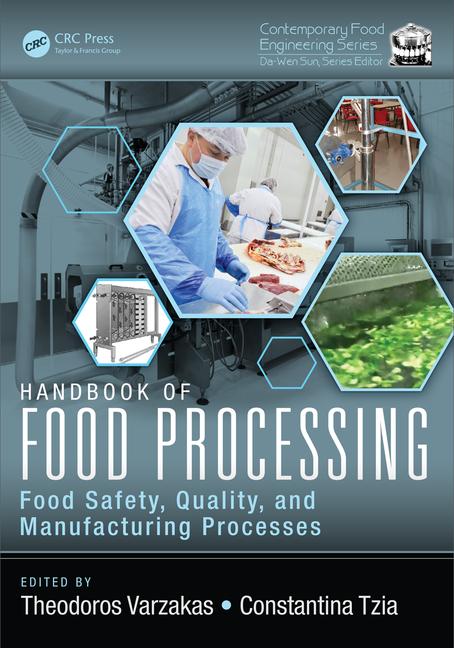Sponsored Content
New Requirements for Suppliers to Big Box Retailers Regarding Food Safety

Credit - Adobe Stock.
Many food processors are currently struggling to understand how best to respond to a notice they recently received from an important customer – a prominent big box retailer – about its changing requirements regarding foreign material (FM) inspection. In essence, this warehouse store is stating that in cases when x-ray technology can do a better job than metal detection for an application, their suppliers need to adopt x-ray inspection to continue the relationship.
As a provider of both metal detection and x-ray inspection technology, we’re well-positioned to help these food manufacturers understand the implications and identify possible next steps. In this article, we’ll speculate as to what might be motivating this retailer to change its stance on quality control and what type of suppliers might be most affected. We’ll compare the capabilities of metal detectors to x-ray inspection systems and discuss what applications would most likely benefit from one or the other. Lastly, we’ll look at ancillary technology that can boost the effectiveness of any inspection system.
Product quality goals
Beyond a company’s objective to protect the health and wellbeing of consumers, they also want to protect their brand’s reputation. Today more than ever, social media enables the rapid spread of information and even a small quality problem can generate significant consequences if widely publicized. On the more extreme end, companies are highly motivated to avoid lawsuits and product recalls, which can easily cost $10 million or more. Prevention is the best defense, and product inspection systems that can detect and reject packaged products contaminated with foreign material, before those products leave the factory, offer the best brand protection.
Affected food processors and packers
With very few exceptions, such as whole raw produce and whole muscle meats, virtually every food manufacturer and contract packer supplying this big box retailer is being asked to meet new food safety and quality audit expectations regardless of supplier size, product type, manufacturing location or export destination. That said, many large food manufacturers and contract packers have already adopted x-ray inspection and could pass the new audit requirements with no further effort. It’s the smaller processors, especially the smaller family-owned businesses, that will likely have the hardest time since they may not have allocated money to invest in x-ray technology. In addition, floorspace constraints are a concern for these smaller processors.
Comparing product inspection systems
Modern metal detectors use magnetic permeability and electrical conductivity to identify ferrous, non-ferrous and stainless-steel contaminants in bulk, free-flowing, pumped or packaged products under gravity-fed conditions, in pipelines or on conveyors. The better the sensitivity of the metal detector, the smaller the pieces of metal it can detect.
To maximize metal detector sensitivity while minimizing false rejects, the smallest possible aperture size should be used and the frequency of the detector should be compatible with the product. For dry products like snack foods, high frequencies are often most effective, while wet products or products that fluctuate in temperature can be more challenging and warrant a combination of Multi-Simultaneous Frequency operation and Product Signal Suppression technology. Because environmental conditions can also impact a metal detector’s performance, it’s best to use a metal detector which has built-in noise and vibration immunity. Packaging materials can also affect sensitivity, for example, metalized film possibly necessitates a slightly larger aperture or alternative/multiple frequencies. Highly sensitive metal detectors operating under optimal conditions can consistently detect metal fragments as small as 0.5 mm FE in size.
Modern x-ray inspection systems, which work by measuring absorption differences, can be programmed to detect metal as well as non-metal contaminants such glass, rocks, calcified bone and high-density plastics and rubbers in bulk, free-flowing, pumped or packaged products. X-ray inspection can also perform a range of quality integrity checks including verifying shape, counting components, measuring the mass of a product or a specific zone within the product, measuring correct fill levels, confirming that nothing is trapped within a package seal and more.
To maximize x-ray system sensitivity and minimize false rejects, the ideal generator and advanced software algorithms should be combined to create sharp images while reducing energy consumption. X-ray systems can be equipped with a glass or a beryllium source, achieving accurate detection of metals as small as 0.3 mm in size and glass shards less than 2 mm in size.
When metal detection is best
In general, when metal is the only potential foreign body hazard, metal detection is often the best solution as it can deliver the highest sensitivity to metal contaminants, especially low-density metals such as aluminum. That said, this big box retailer’s position is, if x-ray can do a better job than metal detection for a particular application, that supplier needs to adopt x-ray detection to continue the relationship. Therein lies the challenge, given x-ray inspection can, by its very nature, find more than metal.
However, while x-ray can be located in various parts of the manufacturing process, this big box retailer’s x-ray expectation applies only to the end of the packaging line where final product quality is inspected. Elsewhere, metal detection may continue to be the favored tool at any food manufacturing facilities for inspecting incoming ingredients. At other Critical Control Points along a processing line, either metal detection or x-ray inspection may be the right choice. In these locations, front-end and in-process inspection helps protect downstream equipment and improves profitability by enabling product re-work before further value is added. HACCP audit outcomes should be considered, alongside budget. A reliable manufacturer of both metal detection and x-ray inspection systems can provide expert guidance to choose the most appropriate solution.
Maximizing effectiveness
To get the most out of a product inspection system, whether it’s metal detection or x-ray technology, ancillary technologies can enhance the operation. For example, an inspection system integrated with a reject device automatically removes contaminated or sub-standard product or packages from the production line. For even more security, add reject confirmation software or a lockable, password-controlled reject bin.
Almost all modern product inspection systems today offer password protection to help maintain proper operation by helping to ensure equipment settings are not incorrectly adjusted. Advanced data management software can augment inspection systems to monitor all activities such as testing in real-time and documenting the information for later retrieval. Because test results cannot be falsified or altered without leaving evidence, data management software provides evidence for due diligence.
Test before you invest
Given the complexity of making an informed decision about which inspection technology can do a better job for any unique application, it helps to seek expert advice. At Metter-Toledo, we offer free product tests – simply send samples of your product to our test center in Lutz, Florida and we’ll send you a comprehensive test report that identifies the ideal product inspection solution for your application.
And, if the primary roadblock to adopting new x-ray inspection is the capital cost of the equipment, consider renting. Available on short- or long-term contracts, equipment rental allows a food manufacturer or contract packer to try the technology before committing to an investment or scaling up production to meet one retailer’s demands.
Looking for a reprint of this article?
From high-res PDFs to custom plaques, order your copy today!










